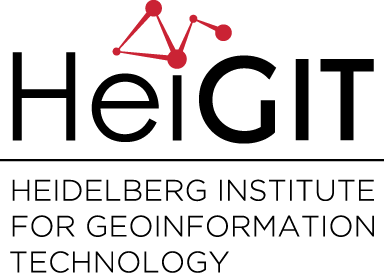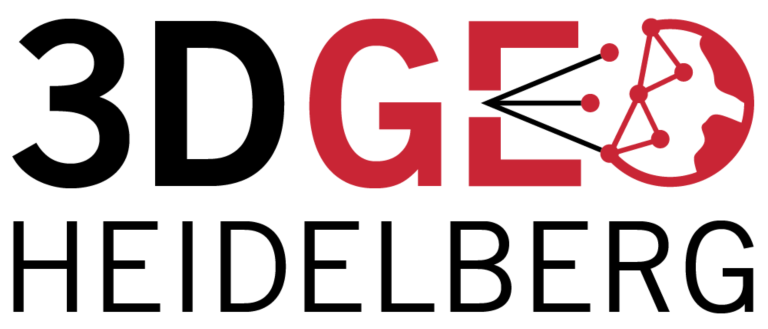Category: Publications
-
Call for Manuscript Proposal Submissions to “Crowdsourced Mapping”: A Special issue to CaGIS
CALL FOR MANUSCRIPT PROPOSAL SUBMISSIONS “Crowdsourced Mapping” To be published as a Special Content Issue of the International Journal “Cartography and Geographic Information Science” (CaGIS) Edited by Dr. Jamal Jokar Arsanjani 1 & Prof. Michael Leitner 2 & Prof. Alexander Zipf 1 1 GIScience Research Group, Department of Geography, Heidelberg University, Heidelberg, Germany 2 Department…
-
GIScience at the GIScience
Last week members of the GIScience Research Group were attending the Eight International Conference on Geographic Information Science in Vienna. Beside the interesting welcome note given by Andrew U. Frank and further follow-up keynote talks, the first conference day was opened up for full day workshops covering various topics of GIScience. Geographic Information Workshop In…
-
A practical algorithm for labelling areal features outside their boundaries
One of the subtasks of automated map labelling that has received little attention so far is the labelling of areas. Geographic areas often are represented by concave polygons which pose severe limitations on straightforward solutions due to their great variety of shape, a fact worsened by the lack of measures for quantifying feature-label relationships. In…
-
Stenomaps: A new visual encoding for thematic maps
Administrative regions and attached statistical data are often simply displayed by the contentious choropleth technique. A recent research collaboration between researchers from the Technical University Eindhoven, City University London and the GIScience group at Heidelberg University successfully added a new arrow to the quiver of Geovisualisation techniques: The Stenomap. The stenomap comprises a series of…
-
Approach for Push-Based Result Transmission with Asynchronous Geospatial Processing
Geospatial analyses are increasingly being conducted in networked environments. In such cases, geographic analyses are carried out by leveraging ressources (including geospatial algorithms) on some remote server. A user might upload some dataset onto a server, triggers some geo-computation and awaits the results. Most of such web-based geo-processing services are implementing the so called “Web…
-
“Transactions in GIS” 2013 Impact Factor increased to 1.000
The latest Thomson Reuters ISI Journal Citation Report 2014 has just been released and the Impact Factor (IF) for the international journal “Transactions in GIS” (Wiley) edited by John P. Wilson, Qiming Zhou and Alexander Zipf has slightly increased to 1.000 for 2013.
-
Methods to measure potential spatial access to delivery care in low- and middle-income countries
A case study in rural Ghana Access to skilled attendance at childbirth is crucial to reduce maternal and newborn mortality. Several different measures of geographic access are used concurrently in public health research, with the assumption that sophisticated methods are generally better. Most of the evidence for this assumption comes from methodological comparisons in high-income…
-
Lettering Maps by considering Basemap Detail
If you followed our previous posts (#1, #2) concerning high quality cartographic label placement, then this post is worthy of notice. Topographic maps are arguably one of the most information-dense, yet intuitively usable, graphical artifacts produced by mankind. Cartography as science and practice has developed and collected a wealth of design principles and techniques to…
-
Volunteered Geographic Information for Disaster Management: new publications, talks and course
How can we explore geographical relations between social media and authoritative data to enhance information extraction for disaster management? How can collaborative maps of OpenStreetMap be used for supporting risk analysis and emergency planing? These two questions were explored recently by researchers of the GIScience group working on the use of Volunteered Geographic Information for…
-
Improving the Quality of Cartographic Labeling
The lettering process, including assigning names to point features, is an essential part of map production. While there have been numerous and varied research efforts to automate point-feature label placement (PFLP), none of them seems to have taken into account the many well-established cartographic precepts for point-feature annotation used by human cartographers. As a result,…
-
Measuring the Reliability of Wheelchair User Route Planning based on Volunteered Geographic Information (OpenStreetMap)
The development of a wheelchair user friendly route planning application inherits a number of special requirements and details that need to be considered during the generation of the routing graph and the corresponding algorithm, making this task much more complex than car or pedestrian related applications. Each wheelchair type and, more importantly, each individual user…


